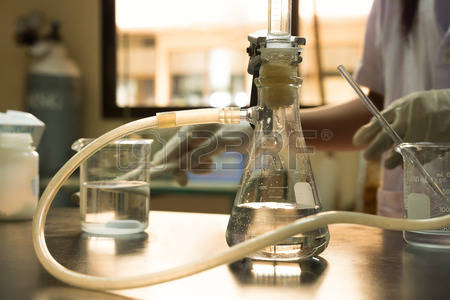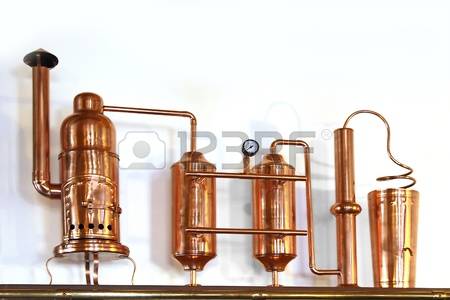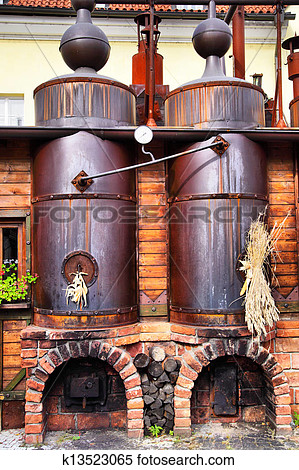Controlled-Temperature Storage at the End












Controlled-Temperature Storage at the End
One the hydrosols arrive, get them to a cool storage as fast as possible. I have found that a constant-temperature environment that fluctuates no more than two or three degrees Celsius in either direction is as important as the baseline temperature. Ideally, hydrosols should be stored in an area that is kept around ten to thirteen degrees Celsius.
This is slightly warmer than most refrigerators, but refrigeration certainly does them no harm and is the easiest method of temperature control for smaller quantities. A cold room is the perfect option for large amounts, and if you are considering handling hundreds of litres per year, this option is worth investigating. Cold rooms protect your investment and protect your customers.
Reference: Hydrosols: The next Aromatherapy: Suzanne Catty
Rapid Shipping Methods







Rapid Shipping Methods
Transportation of the waters is the next issue in preserving their shelf life. Depending on where you live and what you are buying, hydrosols may come from very near or very far away. Australia and New Zealand, fo instance, are very far from anywhere except each other. For this reason, it is extremely difficult to obtain hydrosols from that part of the world. The cost of air transportation is very high, and hydrosols are heavy: like water, one liter weights one kilogram. Surface transport means shipping by boat. This is exceedingly slow, and unless you are willing to find and pay for temperature-controlled shipping, it is out of the question, as spoilage is sure to occur in the weeks or months at sea.
I have begged one Australian distiller on countless occasions to ship me some of his unique hydrosols, explained that I would assume all the risks of spoilage, and arranged air cargo, but to no avail. He, like many others, has had experiences in shipping the waters in the past and are reluctant to try it again. For this reason most of the eucalyptus hydrosol on the market comes from Portugal, where a high-quality oil is being produced.
It is a fact that at least 20 percent and up to 60 percent of the cost of a hydrosol is in the transport. Air transport is the only viable method, since any shipping means that there are no controls over temperature and storage conditions. Hydrosols are fragile, and if they are left in a hot warehouse or boat for weeks on end, the likelihood of degradation skyrockets. Even air transport means the hydrosols are not temperature controlled for at least a few days. I once shipped a product to Banff, Alberta, in the middle of January. Sent priority courier overnight, they arrived frozen and solid but were quite fine when thawed very slowly: It is only with prolonged exposure to unsuitable conditions that the problem really begin.
It is worth taking care and spending what needs to be spent on transportation. There is no way to guarantee how the hydrosols have been treated prior to shipping, although you do your best to buy reliably. But you do have choices in how the products are treated after you receive them, and storage is critical.
Reference: Hydrosols the Next Aromatherapy: Suzanne Catty
Controlled Temperature for Storage at the source





Controlled Temperature for Storage at the source
The distillers of hydrolates must be willing to care properly for the waters if they are to have value as a therapeutic commodity. Cool, constant temperature with minimal or no light and sterilized dark opaque containers are best choices. Of course, cold storage is not always easy, but most distillers have some cool, dark facility for their oils. The idea temperature for the waters is around ten to thirteen degrees Celsius (fifty to fifty-five degrees Fahrenheit), and the consistency of the temperature range is important in preventing condensation inside storage vessels.
Usually the dilemma becomes one of space. If you have only enough room for your oils in the cold store, are you really going to keep the waters? Is there enough value, both momentary and therapeutic, in hydrolates to justify the extra care they require? For many the answer is already yes, and for others it soon will be.
Reference: Hydrosols The next Aromatherapy; Suzanne Catty
Distillation or Best-Before Date Noted on Each Batch











Distillation or Best-Before Date Noted on Each Batch
once produced and in bulk containers , each batch of hydrolate should be labelled with the distillation date and all other information necessary to track production. Good distillers may even be able to tell you the field or location that the plants came from by the batch code. This helps identify not only products and sources that are different in quantity but also products that are different in effect.
Calamus (Acorus calamus) root grown in Europe or Asia contains high levels of the toxic keytone beta-asarone. The Canadian variety is completely beta-asarone-free and therefore safe for use in therapeutic applications. Just as with essential oils, we must know all we can about the hydrosols we use.
Reference: Hydrosols The next Aromatherapy; Suzanne Catty
Articles - Most Read
- Home
- What are Hydrosols
- What are Hydrosols-2
- The Monographs
- How to Make a Hydrosol
- Table of Common Latin Names and pH Values - F - O
- Distilled or Extracted Specifically For Therapeutic Use - 3
- Kurt Schnaubelt
- What isn't a Hydrosol?
- Table of Common Latin Names and pH Values - P - S
- Wholly Water!
- Blue Babies
- Supply and Demands
- Mature Skin
- Recipes Alpha F
- Hydrosols In The Marketplace
- Chemicals: Friends or Foes?
- Hemorrhoids
- Nelly GrosJean
- Water as Medicine
- The Educated Consumer
- Genitically Modified Plants
- Influences
- Water Quality
Articles-latest
- Daucus carota/Wild Carrot Seed - pH 3.8-4.0
- Cupressus sempervirens/ Cypress-pH3.5-3.7
- Coriandrum sativum/Coriander Herb-and-Seed
- Comptonia peregrinal/Sweet Fern- pH 3.8
- Citrus clementine (fe) Clementine Petitgrain- pH 4.3-4.4
- Citrus aurantium var. amara (flos) /Neroli Orange Blossom-pH3.8-4.5
- Cistus ladaniferus/Rock Rose-pH 2.9-3.1
- Cinnamomum zeylanicum (ec) Cinnamon Bark-pH3.3
- Chamaemelum nobile/Roman Chamomile - pH 3.0-3,3
- Centaurea cyanus/Cornflower/Bachelor's Button-pH 4.7-5.0
- Cedrus atlantical/Cedarwood/Atlas Cedar-pH 4.1- 4.2
- Hydrosols -The PH - Anomalies
- Hydrosols- Establishing Shelf Life and Stability
- Boswellia carterii/FRANKINCENSE
- Asarum canadense/ Wild Ginger/Canadian Ginger
- Artemesia vulgaris / Artemesia
- ARTEMESIA DRACUNCULUS - TARRAGON
- Angelica archangelica / Angelica Root - Hydrosols
- The Key, or More Correctly, the pH - 2 - Hydrosols
- The Key, or More Correctly, the pH-Hydrosols
- The Hard pHacts - Hydrosols
- Calamus Root/Sweet Flag - ACORUS CALAMUS
- Yarrow - Achillea millefolium - Hydrosols
- Balsam Fir - Abies balsamea - Hydrosols

